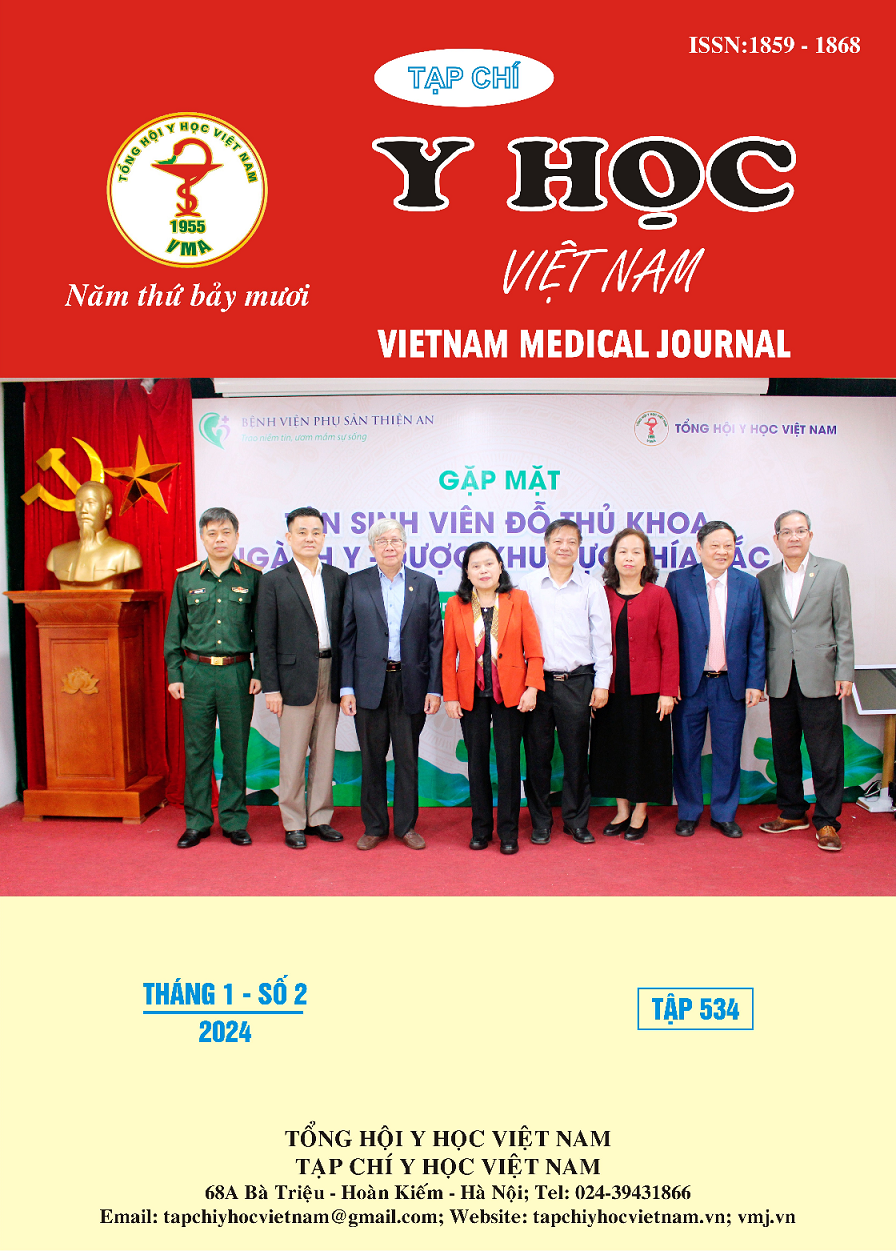CHRONIC VENOUS INSUFFICIENCY OF THE LOWER LIMBS IN STAFF AT NATIONAL GERIATRIC HOSPITAL
Main Article Content
Abstract
Objective: The study aims to describe the current situation of chronic venous insufficiency of the lower extremities (CVI), and some related factors in staff of National Geriatric Hospital. Subjects and research methods: Cross-sectional descriptive study on 451 staff of the National Geriatric Hospital were examined clinically and had doppler ultrasound of the lower extremities. Results: Average age was 35,89 ± 8,1 years; female/male ~ 2/1; 63,6% showed at least 1 functional symptom of CVI; In which the two symptoms of leg heaviness and cramps appear the most with rates of 36,1% and 30,6%, respectively. CEAP clinical classification: C0 = 30,6%, C1-6 = 69,4%. Evaluation on vascular doppler ultrasound: 48,1% had pathological reflux. The difference in the rate of CVI is statistically significant in some risk factors: Age (rate C1-6 in the age group ≥ 50 is 88,9%, in the group < 50 years is 67,0%, p=0,008; OR=3,8); Gender (the risk of grade C1-6 in women is 2,96 times higher than in men); Long standing/sitting time at work (prevalence in the group ≥ 4 hours/day is 60,4%, in the group < 4 hours it is 27,4%, p<0,001); Exercise (the group that did not exercise regularly had a higher rate of venous insufficiency of 52,1% than the group that exercised regularly with 41,4%, p=0,028). Conclusion: Rate of CVI in staff of the National Geriatric Hospital: 48,1% have pathological reflux on doppler ultrasound, according to the CEAP classification, 69,4% have degrees C1-6. There are a number of factors related to ectropion such as: age, gender, time spent working in the same position. standing/sitting for long periods of time, exercise habits.
Article Details
References
2. Cao Văn Thịnh, Văn Tần (1998). Khảo sát tình hình phình giãn tĩnh mạch chi dưới ở người lớn hơn 50 tuổi tại TP. Hồ Chí Minh. Báo cáo tại hội thảo về bệnh lý tĩnh mạch 1998.
3. Phạm Thắng, Nguyến xuân Mến (1998). Phát hiện dòng chảy ngược tĩnh mạch hiển dài và hiển ngắn ở những người trên 50 tuổi bằng phương pháp Doppler continue. Công trình những nghiên cứu khoa học Bệnh Viện Bạch Mai (1997 - 1998), Tập I. Nhà xuất bản Y học, Hà Nội; tr.126-130
4. Sophie Ziegler (2006). Chronic venous disease is highly prevalent in hospital employees. Phlebolymphology. Vol 13. No3. 2006. p150-155
5. Cires-Drouet RS, Fangyang L, Rosenberger S, et al (2020). High prevalence of chronic venous disease among health care workers in the United States. J Vasc Surg Venous Lymphat Disord. 2020 Mar; 8(2):224-230.
6. Regan Shakya, Robin MK, Rojina S et al (2020). Varicose veins and its risk factors among nurses at Dhulikhel hospital: a cross sectional study. Published online 2020 Feb 3. https:// www.ncbi.nlm.nih.gov/pmc/articles/PMC6998362/
7. Eklöf B, Rutherford R.B, Bergan J.J, et al, (2004). Revision of the CEAP classification for chronic venous disorders: consensus statement. Journal of vascular surgery, vol. 40, pp. 1248-1252.
8. Labropoulos N, Tiongson J, Pryor L et al (2003). Definition of venous reflux in lower-extremity veins. J Vasc Surg. 2003; 38: 793-798
9. Scott T.E, LaMorte W.W, Gorin D.R et al (1995). Risk factors for chronic venous insufficiency: a dual case-control study. J Vasc Surg. 1995; 22: 622-628
10. F Tüchsen 1, H Hannerz, H Burr et al (2005). Prolonged standing at work and hospitalisation due to varicose veins: a 12 year prospective study of the Danish population. Occup Environ Med, 2005 Dec; 62(12):847-50.


